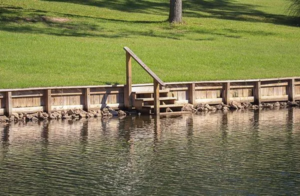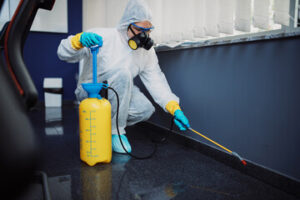General Contractors Tacoma WA oversees construction for larger home projects. They enter the primary contract with property owners and act as their project manager.
GCs are responsible for estimating and planning the work, creating a budget, and managing timelines. They also perform inspections and verify that the work meets standards.

Before you begin working as a general contractor, it’s important to ensure that you meet all local licensing requirements. These include passing certain exams, demonstrating your ability to work within specific trades, and submitting proof of insurance coverage. You may also be required to pass background checks and complete training programs. The process can vary by state, but it’s typically overseen by the municipality where you intend to work.
Obtaining a contractor license can be time-consuming, but it’s an essential step in the construction industry. It not only proves that you have the qualifications and skills to take on construction projects, but it also increases your credibility with clients. Getting licensed can help you avoid fines, legal issues, and suspension of operations.
Licensing requirements vary by state, but most require you to identify a qualifying party, who must have experience and pass a series of exams. Most states will require you to submit proof of insurance, a surety bond, financial information, and a fee. Some states also require you to take a business management exam and a trade exam, while others have additional requirements like a background check for the qualifying party and officers of your firm.
Some states, including Alaska, require you to be licensed for commercial and residential work. For example, you’ll need a general contractor license to work on construction, remodeling, and repair projects that are worth more than $50,000 or swimming pools over $5,000. You’ll need to provide three references, a financial statement, and proof of workers’ compensation insurance.
In Connecticut, only plumbers and electricians are required to carry a state-issued license, but general contractors must register with the Department of Consumer Protection and comply with home improvement requirements. In New York, you’ll need a license to perform most types of construction-related work. You’ll need to register your business and submit financial statements, as well as take a trade exam and pass a business and law exam.
Most municipalities have official websites dedicated to contractor licensing, with detailed information on application processes, fees, and requirements. You can also visit the city or county offices that are responsible for licensing to make direct contact and learn more about the requirements.
Bidding Process
As a general contractor, you must be aware of the different types of bidding processes. These include open tendering, selective tendering, and negotiated bids. Project owners typically choose a competitive procurement process to ensure they get the best value for their money. They usually announce a project scope and construction specifications in order to invite contractors to bid on the job. Once the bids are submitted, project managers will conduct a detailed analysis of the prices to select the winner.
In addition to pricing, other factors that affect a contract award are the quality of the bid, past performance, and professional qualifications of the contractor. It’s important to present yourself in a professional manner and submit bids on time in order to compete with other contractors. In addition, a well-thought-out proposal summary is also important. It should include a scope of work, plans and permits, project costs and timelines, and expectations. It should also include any potential risks and how you plan to mitigate those risks.
For larger projects, the project owner may use serial tendering to receive a large number of bids from qualified contractors. This process enables the project owner to compare bids side by side and identify a contractor that is capable of meeting the needs of the project. This type of bidding is most often used by government agencies or businesses.
In addition to pricing, other factors that affect the contract award are the quality of the bid, project schedule, and delivery method. The project owner will choose the most cost-effective, quality-driven contractor that can meet their requirements within the project’s desired timeframe. In some cases, the project owner may opt for a direct selection or sole source method of contracting. In this scenario, the project owner will only select one contractor based on their pricing and technical specifications and will likely lean towards contractors with strong relationships and previous goodwill. However, the contractor must be able to demonstrate they can perform this type of work on a consistent basis. The selected contractor will enter into contract negotiations with the project owner to finalize a scope of work, schedule, and payment terms guided by the chosen contract type.
Managing Subcontractors
Whether they’re responsible for a small residential project or the development of an entire city block, a general contractor manages many aspects of a construction project. The GC schedules and directs the daily activities on the construction site while overseeing subcontractors who specialize in specific building trades. The GC also handles the complexities of the building process and ensures the final product meets all design specifications and client expectations.
The GC sets clear expectations for both themselves and their subcontractors during contract negotiations. During this phase, the GC establishes payment terms, project milestones, scope adjustments and dispute resolution mechanisms that are in line with the overall project goals. This helps avoid misunderstandings and potential conflicts that could affect the quality of the work and the overall project timeline.
In addition to setting clear expectations, a GC regularly assesses the progress made by their subcontractors and monitors costs. This helps them identify and implement cost-efficiency measures that can minimize unwarranted budget overruns without impacting the quality of the final product.
Large construction projects require a steady supply of raw materials and building components from various vendors. To manage this process, a GC works with the vendor management team to ensure that the project is on track for completing all tasks on time and within budget. This includes ensuring that all vendors are properly qualified, have the appropriate capacity to handle the volume of work and can deliver high-quality results.
The GC also coordinates with the architect and other team members to organize task timelines. They may give each subcontractor a few days more than the typical amount of time for a given task to allow for scheduling issues and other challenges that can arise during the course of the project. The GC is also responsible for obtaining and coordinating all building permits and inspections required to proceed with the construction on a property.
The management of subcontractors is an ongoing process that lasts throughout the lifecycle of a construction project. This involves identifying and working with qualified partners, managing performance, providing oversight, and resolving any disputes that might arise.
Project Management
Once all the planning, budgeting, and design phases are finished, it’s time for construction to begin. During this phase, the project manager and construction managers oversee daily operations to ensure that work is carried out according to the plans and specifications. They may also help coordinate among different contractors on the jobsite. They may also set up a safety plan for the site and ensure that all projects meet local regulatory requirements.
The project management role often includes the responsibility for a budget and financial forecasting. This means that they will analyze the plans, materials, and labor requirements to determine an accurate estimate of costs for the entire project. This is an important step because it will help them determine how much money they need to raise or borrow to complete the project within a certain time frame.
Depending on the size and scope of the project, they may choose to use a fixed-price contract or a time and material contract. In a fixed-price contract, the contractor agrees to complete the project for a predetermined price. This eliminates the risk of cost overruns, but it can limit flexibility for unforeseen conditions or changes to the scope of work.
A time and materials contract is a more flexible arrangement where the contractor is reimbursed for the actual cost of the labor and materials used on the project, plus a markup for profit and overhead. This type of contract is often used on small projects or for maintenance work, and it can be easier to track actual costs and budgets.
In addition to managing the budget and schedule, a general contractor is also responsible for ensuring that all work is performed to the highest standards. They may perform quality inspections of completed work or require subcontractors to submit evidence that their work meets specific criteria before releasing progress payments. This helps to reduce disputes over payment amounts and encourages contractors to continue working diligently.
Once construction is complete, the project manager will supervise final inspections and handover the building to the owner. They will also compile all the documentation (warranty docs, manuals, etc.) that is required to run and maintain the building, and they will make sure that all necessary information is transferred from the GC to the project owner.








